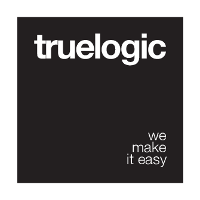Modal
The Quasar Modal component is a UI overlay, which offers extended screen space to allow the user to get more work done. Modals are used for such things as login or signup dialogs, for message composition windows or extended option selections, like offering a list of users to be friends with.
IMPORTANT
During development open/close might not be triggered because of HMR. Best would be before updating source files to close the Modal. This way HMR will correctly do its job. In production this scenario can’t happen, so no bugs for final product.
Basic Usage
Below you’ll find the code to a very basic modal:<q-modal ref="basicModal">
<h4>Basic Modal</h4>
<q-btn color="primary" @click="$refs.basicModal.close()">Close</q-btn>
</q-modal>
Modals are responsive to the width of the window (see demo on a desktop and resize browser window). Sometimes you need to always have a Modal maximized or minimized regardless of window width, so to do this, Quasar offers the minimized and maximized props:<q-modal maximized>
...
</q-modal>
Toggle through v-model
<template> |
Vue Properties
| Property | Type | Description |
|---|---|---|
content-css | Object/Array/String | Applies CSS style to Modal container. Use Object or Array of Object when also specifying position prop. |
content-classes | Object/Array/String | Classes to apply to Modal inner content. |
transition | String | Vue transition to use. Quasar comes with a q-modal transition out of the box. But you can write your own Vue transitions using CSS and use them. |
no-backdrop-dismiss | Boolean | Disable Modal dismissal by clicking/tapping on backdrop. |
no-esc-dismiss | Boolean | Disable Modal dismissal by hitting Escape key. |
position | String | Stick Modal to one of the screen edges (top, right, bottom, left). |
position-classes | String | Space delimited CSS classes that overwrite the default ‘items-center justify-center’ classes. Gets overridden by position if present. |
minimized | Boolean | Always minimized regardless of screen width. |
maximized | Boolean | Always maximized regardless of screen width. |
enter-class | String | enter transition class name |
leave-class | String | leave transition class name |
Vue Methods
If the modal includes buttons or other clickable items which cause navigation or other events to be raised within your app, it’s vital to use the callback feature of these methods, and what’s passed in must be a function. So, if you want to close a QModal and then navigate to a new route, the code must look something like this:<q-modal ref="myRef"
<q-btn @click="$refs.myRef.close(() => $router.push('/newroute'))" />
</q-modal>
| Method | Description |
|---|---|
open | Open Modal. Takes one optional Function parameter to trigger after Modal is opened. |
close | Close Modal. Takes one optional Function parameter to trigger after Modal is closed. |
toggle | Toggle open/close Modal state. Takes one optional Function parameter to trigger after Modal is toggled. |
Vue Events
| Event Name | Description |
|---|---|
@open | Triggered right after Modal is opened. |
@close | Triggered right after Modal is closed. |
@escape-key | Triggered if the Modal is dismissed with the Escape key on desktops. |
Examples
Capturing Events
<q-modal |
Styling Modal
<q-modal :content-css="{padding: '50px'}"> |
Sticking Modal to an Edge
<q-modal position="left"> |
Modal with Layout
When making layout inside a modal, Quasar has a special component called QModalLayout (described in next section), which takes care of any needed structure.
Do NOT use QLayout inside a QModal. Instead, use the simplified QModalLayout.
<q-modal ref="layoutModal" :content-css="{minWidth: '80vw', minHeight: '80vh'}"> |
QModalLayout
QModalLayout has two slots (header and footer) and the following properties which can be either String, Object or Array:
| Property | Description |
|---|---|
header-style | Style applied to header. |
header-class | CSS classes applied to header. |
content-style | Style applied to content (between header and footer). |
content-class | CSS classes applied to content (between header and footer). |
footer-style | Style applied to footer. |
footer-class | CSS classes applied to footer. |
Example:<q-modal .....>
<q-modal-layout
header-style="min-height: 100px"
content-class="{'bg-primary': isPrimary, 'some-class': someBoolean}"
footer-class="bg-primary some-class"
footer-style="{fontSize: '24px', fontWeight: 'bold'}"
>
<!--
inject header and/or footer slots here
examples:
1. <div slot="header">...</div>
2. <q-toolbar slot="header">...</q-toolbar>
-->
...
<!--
all other elements not using header or footer slot
is considered content
-->
....
</q-modal-layout>
</q-modal>
 Quasar
Quasar 